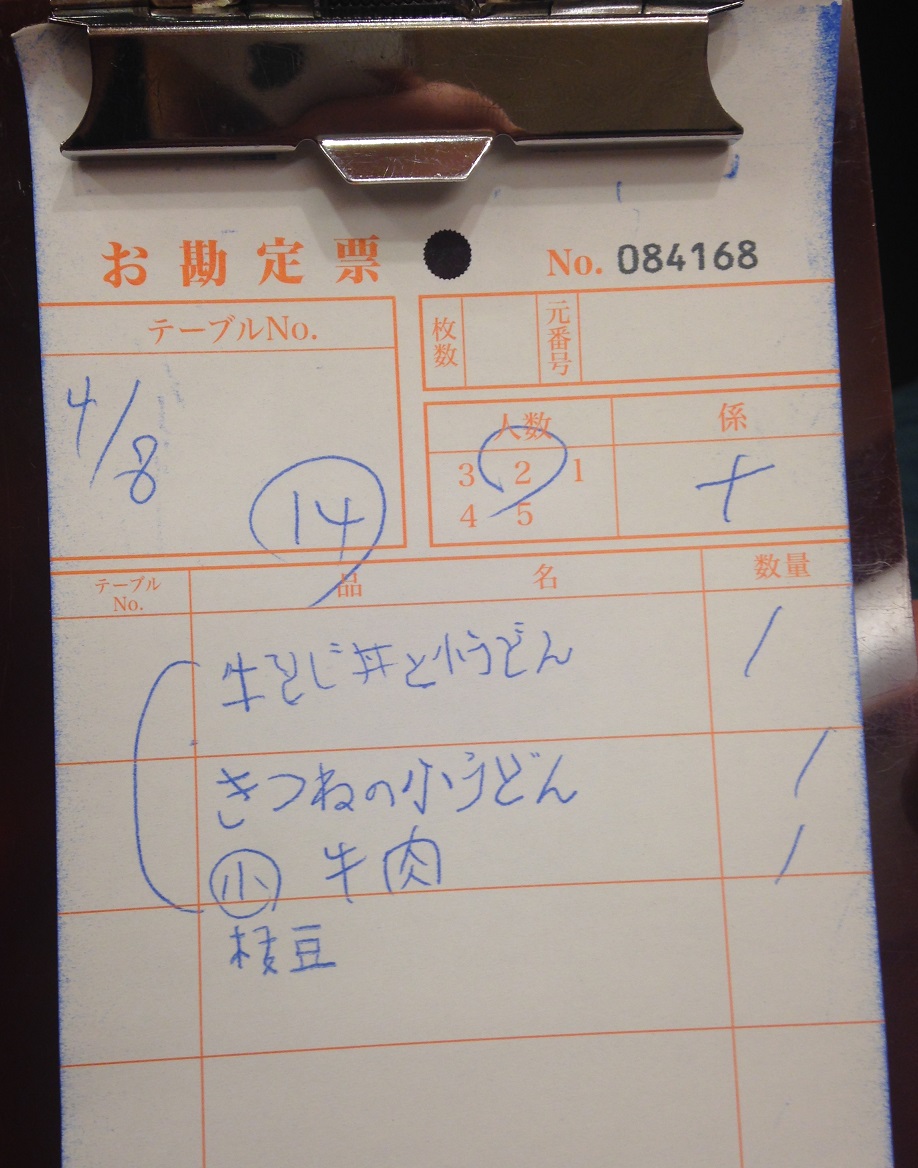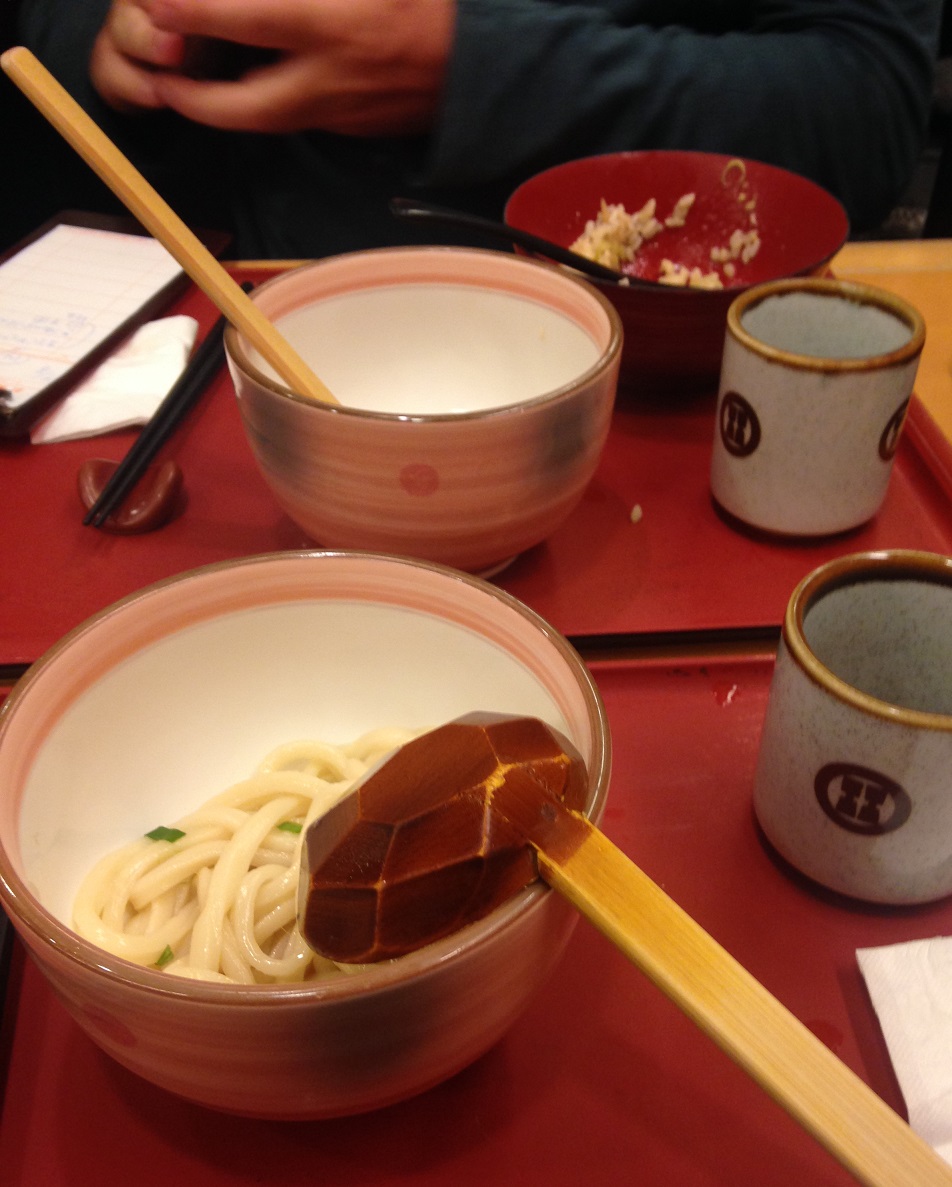When we last left our beleaguered heroes, they were collapsing into a fancy bed after a long day of travel. So, it comes as no surprise that by the time they woke up, got ready, and figured out the Osaka trains, it was one in the afternoon. And they were hungry. They saw that the subway station had a mall with restaurants right above it, so they took the elevator up and picked a lunch place with reasonable prices.
—
Walking in, it was clear that this was the kind of place that business people pop into for a quick lunch, often alone. One of the waitresses motioned us to a table in the corner, managing to look neither surprised nor disgusted by our gigantic backpacks. She left us with one menu, two identical quarter sheets of white paper with red writing, and one sheet that resembled an order pad. Luckily, the menu had a lot of food photos to help us. We’ve also eaten a significant amount of Japanese food in our lives, so we were familiar with things like gyoza (dumplings), edamame (soybeans that look like green peas in the pod), and udon (clear broth noodle soup). So, we picked what we wanted: edamame and a bowl of udon soup with tofu for me, and a beef on rice dish and a bowl of soup for B.
And then we waited. No one seemed to be returning to take our order, and the one businessman near us had ordered before we arrived and was quietly eating his food in peace. The sign on our table said something about 14:00, and we weren’t sure if that meant the place intended to close at 2. Worried that we would be keeping them past their hours, we wanted to order quickly. Maybe we need to circle some of the numbers on this white and red form, we thought, especially since there is one for each of us. So, I tried to enter the characters on the form into Google Translate on my phone, to see if we could figure it out. Sadly, the Japanese keyboard showed me only twelve or so characters, likely based on the beginning sound; when you click on one of them, a menu opens up, showing other character options – presumably based on related sounds. Suffice it to say, clicking on each of twelve characters and then scrolling through a list of ten to twenty alternate characters to try to match the words on the form was a losing battle.
On the other hand, the order form looked more familiar, since we have both served food before. So, we decided to copy over the names of our desired dishes from the laminated menu onto lines of the order form. This is hard to do, when you don’t know what flourishes are stylistic or font-based, and which are critical to correct interpretation of the character. We toiled carefully over our writing for a few minutes. First, B wrote his beef and soup combo, then I wrote my soup, and finally, I wrote my edamame. Satisfied that we weren’t going to be able to improve on our efforts, B went and gave our form to one of the waitresses out front.

This was clearly not the correct way to order, based on how surprised she looked at his arrival with the sheet. She then proceeded to ask him a question about his order. It’s a good thing that he caught on quickly to what she wanted, because I definitely would not have. It turned out that the beef dish came with one of five or six choices of soup, and she wanted to know which of them he wanted. When he pointed, she drew an arc to the bottom of the form and added some characters in circles to indicate his answer. B came back to the table, and we happily saw some new people be seated – though it was past 2 pm.
When our food arrived, happily, it was exactly what we had intended to order. We polished off the food (minus my wheat noodles) and contentedly paid our bill. One of the waitresses was kind enough to offer her compliments on our writing in broken English. Perhaps she just appreciated our unorthodox efforts, but we decided to take the compliment. And then to Google correct ways of ordering food in Japan.



